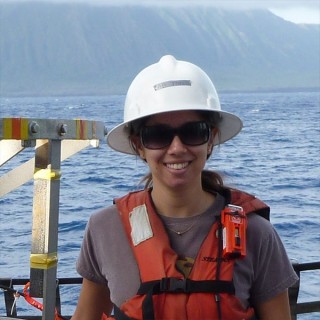The ocean’s inhabitants are strongly dependent on conditions in the environment in which they live. The hydraulic jump that we are studying at Kaena Ridge has the potential to influence the local marine ecosystem in profound ways. 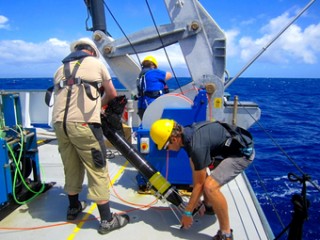
Phytoplankton are tiny organisms that, like land plants, have chlorophyll that allows them to use energy from the sun’s light to grow. They form the base of the ocean food chain and reside throughout the upper layer of the ocean. In addition to sunlight, phytoplankton need nutrients from the water. But the upper layer of the ocean tends to be low in nutrients because the phytoplankton that live there are continually using all the nutrients available. Lower down in the ocean, where there are no phytoplankton to drain the nutrients, the waters are nutrient rich.
A Critical Ocean Motion
This normal order can be disrupted by certain types of motion in the ocean, and an internal hydraulic jump is one of them. The hydraulic jump that forms as tidal currents force water to flow up and over the ridge acts as a region of strong turbulent mixing between deep and shallow water, helping to blend the two together.
…the ocean is a complex environment and there is still plenty of room for us to be surprised
Some phytoplankton may get caught by the waters of the hydraulic jump and mixed downward, deeper than they would otherwise be found. At the same time, nutrient-rich deep waters may be mixed upwards into the usually nutrient-poor upper layer.
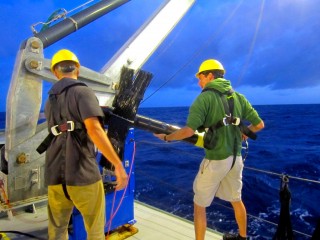
In this way, the hydraulic jump may in effect be fertilizing the upper layer of the ocean near Kaena Ridge, allowing larger phytoplankton populations to grow in its wake. Because phytoplankton are the base, their enhanced growth would feed the animals in the region all the way up the food chain, increasing overall abundance in the local ecosystem.
On Falkor, we are gathering data that we will use to characterize the ways the hydraulic jump affects the nearby ocean life. The CTD (Conductivity-Temperature-Depth) instrument has sensors that measure the amount of chlorophyll in the water as well as the concentration of small suspended particles, which can include phytoplankton.
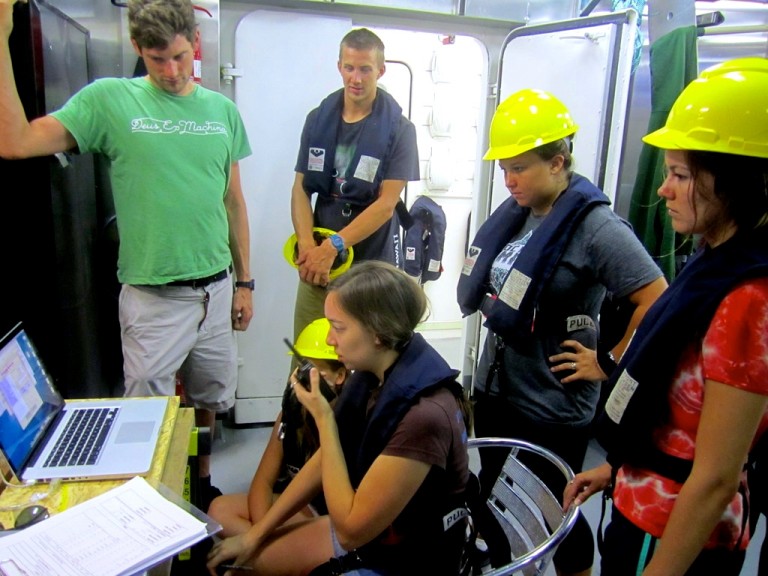
Expanded View
Additionally, Falkor has sonar that sends sound signals down into the water and receives them when they bounce back. The sonar system measures the time it takes for the sound to return and converts that to the distance the sound traveled. This is useful for measuring the depth of the ocean floor, since most of the sound waves will reflect off the bottom.
However, some of the sound waves will also reflect off of particles in the water. This will help show us where there are large populations of plankton, including tiny animals called zooplankton that largely feed on the phytoplankton.
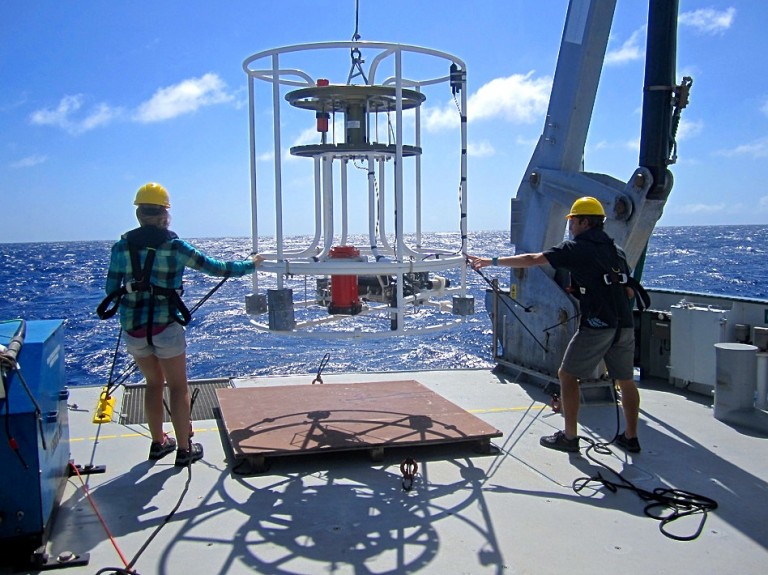
We are also collecting water samples from multiple locations over the ridge at various depths using large bottles attached to the CTD. These samples will allow us to quantify nutrient concentrations, count the number of phytoplankton present, and identify other small organisms in the water including types of zooplankton. In other words, they will give us a better picture of what our other data, such as the signals from the sonar, may be telling us.
The data from the Falkor cruise will help us understand what role the hydraulic jump plays in the local marine ecosystem. Our understanding of the ocean allows us to make predictions of the kinds of things we may observe, but the ocean is a complex environment and there is still plenty of room for us to be surprised. The element of discovery is what makes scientific research exciting.

